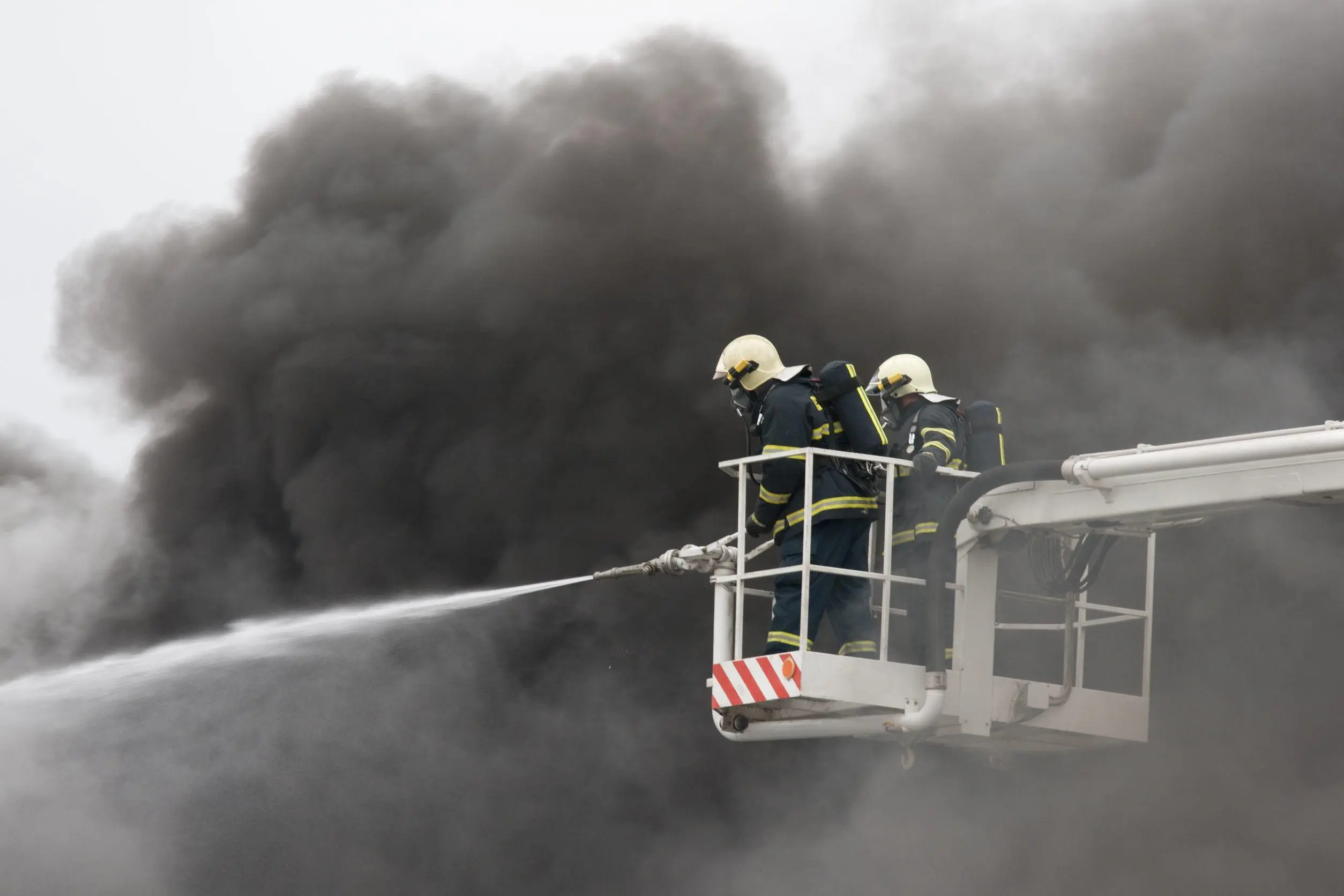Fire smoke and effluent generation techniques
Assessment of toxic hazards is increasingly being recognised as an important factor in the assessment of fire hazards.

Prediction of toxic fire hazards depends on two parameters.
- Time-concentration profiles for major products. These depend on the fire growth curve and the yields of toxic products.
- Toxic potency of the products, based on estimates of doses likely to impair escape efficiency, cause incapacitation, or death.
Both of these criteria require toxic product yields from bench-scale tests to be replicated in large scale fires. For a bench scale method to differentiate between the stages of a fire, it must allow the equivalence ratio and/or the combustion efficiency to be quantified so that the individual fire stages can be identified, and the product yields correlated to each stage.
Our equipment
Steady state tube furnace
A steady-state tube furnace (BS 7990, IEC 60695-7-50, ISO/TS 19700) is the only method that has been shown to replicate the high toxicity of fully developed fires on a bench scale. The steady-state tube furnace generates fire effluents as a function of fire conditions (temperature and ventilation) so that the toxic product yields at each stage of fire growth may be determined directly.
This apparatus is designed to burn polymeric materials under different fire scenarios, particularly to look at the yields of toxic products, which are highly dependent on the fire conditions (temperature, oxygen). It achieves this by burning materials at a fixed rate in a controlled air supply, independent of the flammability of the material. The furnace conditions are chosen to represent real fire conditions from early stages to post-flashover and permit the collection of smoke and other effluents for detailed analysis with the sophisticated analytical equipment available (electrochemical sensors, FTIR, HPIC etc.).
Until recently, fire toxicity was only specified for certain high-risk applications, such as transport. There are now criteria for assessing smoke toxicity for materials used in buildings and how it must be measured, ISO 13344 (Estimation of lethal toxic potency of fire effluents)and how that data must be used, ISO 13571 (Life threat from fires –Guidance on the estimation of time available for escape using fire data).
The apparatus has been used very successfully as a research tool, establishing a correlation between CO and HCN yields (the most toxic components in most fire gases) and the equivalence ratio (actual to stoichiometric fuel/air ratio). These data show an excellent correlation to large scale tests.
The French Railway Test (NF X 70-100)
The French Railway Test (NF X70-100) This is a static tube furnace test, where the different fire conditions are approximated by changing the furnace temperature setting, with a fixed airflow.
The test specimen (typically 1 g, or 0.1 g for low-density materials), is pushed, in a crucible, into the middle of the furnace tube and thermally decomposed, using furnace temperatures of 400, 600 and 800°C to represent oxidative pyrolysis, well-ventilated and under-ventilated conditions in flowing air at 2 litres min-1, where they may pyrolyze and auto-ignite. The effluent is driven through gas detection systems, bags or bubblers for subsequent analysis. The determination of specified fire gases can be presented then as a fire smoke toxicity index (TI).
The Acid Gas Test (EN 50297-2-3)
The Acid Gas Test (EN 50297-2-3) This test has been incorporated into the Euro-classification of cables as part of the Construction Products Directive, introducing an additional acidity classification. This standard uses an apparatus similar to the NF X 70-100 in which a static sample is decomposed in a stream of flowing air in the middle of the tube furnace, above 935°C, and the effluent is collected in bubblers prior to analysis. The acidity of the effluent solution is quantified in terms of pH and conductivity.
NBS smoke chamber (BS EN ISO 5659)
NBS smoke chamber (BS EN ISO5659) The release of smoke generated by the combustion of plastic materials can be determined by several methods. The most common static test procedure is the National Bureau of Standards (NBS) smoke chamber method, standardized in the United States as ASTM E 662.
This test was originally developed to determine the smoke-generating characteristics of plastic materials used in aircraft construction. Additionally, the NBS test has also been used to specify smoke generation in materials for train/subway interiors and industrial flooring.
The smoke density chamber measures visual obscuration accumulated when an essentially flat specimen, up to 25 mm thick is exposed to a radiant heat source of 25 or 50 kW/m2 in a closed chamber, with or without the use of a pilot flame. Depending on the application, either the maximum smoke density or the smoke density at a set time (e.g. 4 or 8 minutes) can be specified. The lack of a pilot flame implies non-flaming combustion, though in some cases the sample will also ignite –significantly reducing the yield of smoke (and toxic products). In addition to smoke, the concentration of toxic gases can also be measured.
